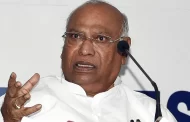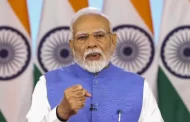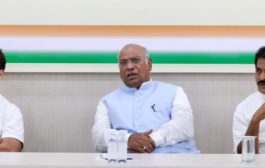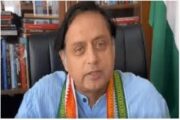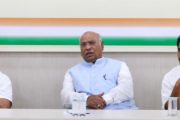The bank gave way on several of the government’s demands at the first board meeting on November 19.

One episode of the long-running and fascinating Reserve Bank of India versus Government of India serial played out at the November 19 meeting of the central bank’s board of directors. Another episode is due on December 14, at the bank’s next board meeting.
The central bank gave way on several of the government’s demands. It extended the period for banks to meet CRAR (Capital to Risk Adjusted Assets Ratio) Basel III norms by another year, till March 2020, which gives banks with dodgy balance sheets a year more to get their acts in order. It also agreed to set up a committee, with the membership to be decided by the central bank’s governor and the finance minister, to examine the Economic Capital Framework of the Reserve Bank itself.
Other matters on the agenda included the restructuring of micro, small and medium enterprise loans, and a reworking of the Prompt Corrective Action framework to address the bad loans crisis. The Reserve Bank will consider a scheme for restructuring stressed “standard” assets (assets that are not yet classified as bad loans) of micro, small and medium enterprise borrowers, which have aggregate credit facilities of up to Rs 25 crore.
The government will continue to push the Reserve Bank to ease restrictions preventing banks placed under Prompt Corrective Action from lending. The Prompt Corrective Action framework is to be re-examined by the central bank’s Board of Financial Supervision.
Banking health versus elections
The Prompt Corrective Action kicks in when an Indian bank breaches any of the acceptable limits of three key ratios. The first is the ratio of capital (the bank’s equity consisting of funds invested by the owners plus accumulated profits) to risk-weighted assets (a loan is called an asset). The second is net non-performing assets (bad loans that are not provisioned for) as a percentage of all assets. The third is profitability or return on assets.
The Reserve Bank places various restrictions depending on the level of perceived risk (it has three risk categories for each ratio). The CRAR is to ensure there is sufficient owned capital to cover potential bad debts. Under Basel III, this must be maintained at 8% of outstanding risk-weighted assets.
Different categories of loans are rated at different risk levels, hence, the ratio of risk-weighted assets. If CRAR is low, the bank cannot safely lend, even if it has plenty of depositors’ funds. Many of India’s public-sector banks have low CRAR. In terms of net non-performing assets, the Reserve Bank flags danger if the net non-performing assets ratio is greater than 6%. In terms of return on assets, it looks at negative returns (losses) for two years or longer.
Once the Prompt Corrective Action kicks in fully, bank lending is halted, creating a catch-22. The bank then cannot earn enough to get itself out of trouble. One solution is for shareholders to pump in more capital. Another is a merger or takeover by a more profitable institution that fixes the balance sheet. Of the 21 public-sector banks in India, 11 are currently under Prompt Corrective Action.
The majority shareholder, which is the government, would like to use those banks now under Prompt Corrective Action as vehicles for pushing out more handouts (high-risk rural loans that would later be forgiven) in an election year. Of course, that might add to the sickness in the banking sector, but winning an election is higher priority.
The government would rather not increase equity capital. There are no buyers either, and the government would be very reluctant to sell down its stake anyway. The government has committed over Rs 2 trillion (it has actually subscribed much less) in fresh bank equity. It would need to double that, or maybe put in even more than double, to meet Basel III norms.
RBI’s contingency fund
The Economic Capital Framework of the Reserve Bank is another contentious area. The central bank makes a profit by printing money – the act of seigniorage. It hands over a large chunk of those profits to the government as dividend while holding on to some of those profits in a Contingency Reserve.
As of June 30, the contingency fund stood at Rs 2.32 trillion. The Reserve Bank also revalues the foreign exchange and bullion it holds, and that Revaluation Reserve stands at Rs 6.91 trillion. This Revaluation Reserve cannot really be touched – it is just that the value of gold and foreign exchange fluctuates.
The Reserve Bank uses what is called a value at risk calculation to decide what it needs to hold as contingency out of the seigniorage profit it makes. In theory, some of that money could be required to stem some sort of systemic failure.
A new committee will be formed to look at the Economic Capital Framework and decide if the Reserve Bank holds too much in Contingency Reserves. The composition of this committee is crucial and it is possible that the government will put together a committee that recommends that the Reserve Bank transfer a large chunk of reserves and change its calculation methodology to ensure larger annual transfers.
There are two sides to this. One is that the Reserve Bank should have the independence to decide what it needs to hold, and the autonomy to take key decisions on inflation targeting within the limits of its commitment (it gives a commitment to keep retail inflation within a certain band). It should also have the autonomy to make other decisions regarding Prompt Corrective Action for bankrupt banks and the desired level of the rupee, among others.
The other side of the story is that the Reserve Bank is over-cautious and holds much more than it needs. Transferring some of the Contingency Reserves to the government could help control the fiscal deficit, which is the difference between the government’s total revenue and total expenditure. It is probably true that the central bank’s value at risk calculation is over-cautious. But, of course, there is a slippery slope there. The government would be tempted to demand larger transfers each time it is in trouble.
The autonomy of the Reserve Bank in other matters is also potentially in question. The government may even want to supersede the central bank and print as much currency as it desires, as a Reserve Bank board member suggested on November 15.
Like the demonetisation of Rs 500 and Rs 1,000 notes in November 2016, this is a deceptively simple idea and it is almost as stupid: if you are in deficit, why not just print more currency to cover the deficit? If this happens, it could lead to fiscal profligacy and disastrous hyper-inflation, or a currency crash. Unfortunately, any government that could carry out a demonetisation cannot be trusted not to monetise the deficit.
We will await the next instalment of the serial with bated breath.
source: scroll.in



